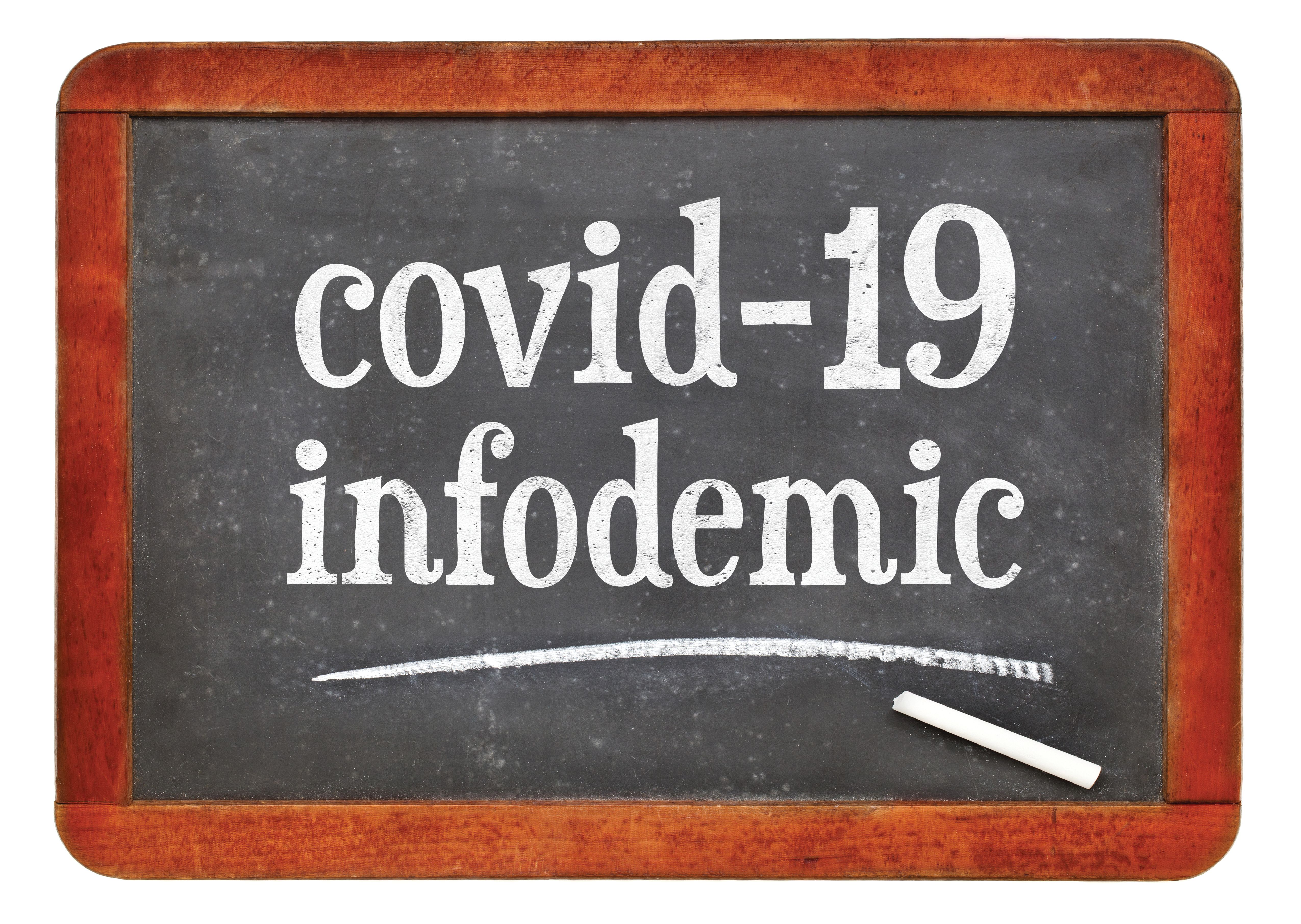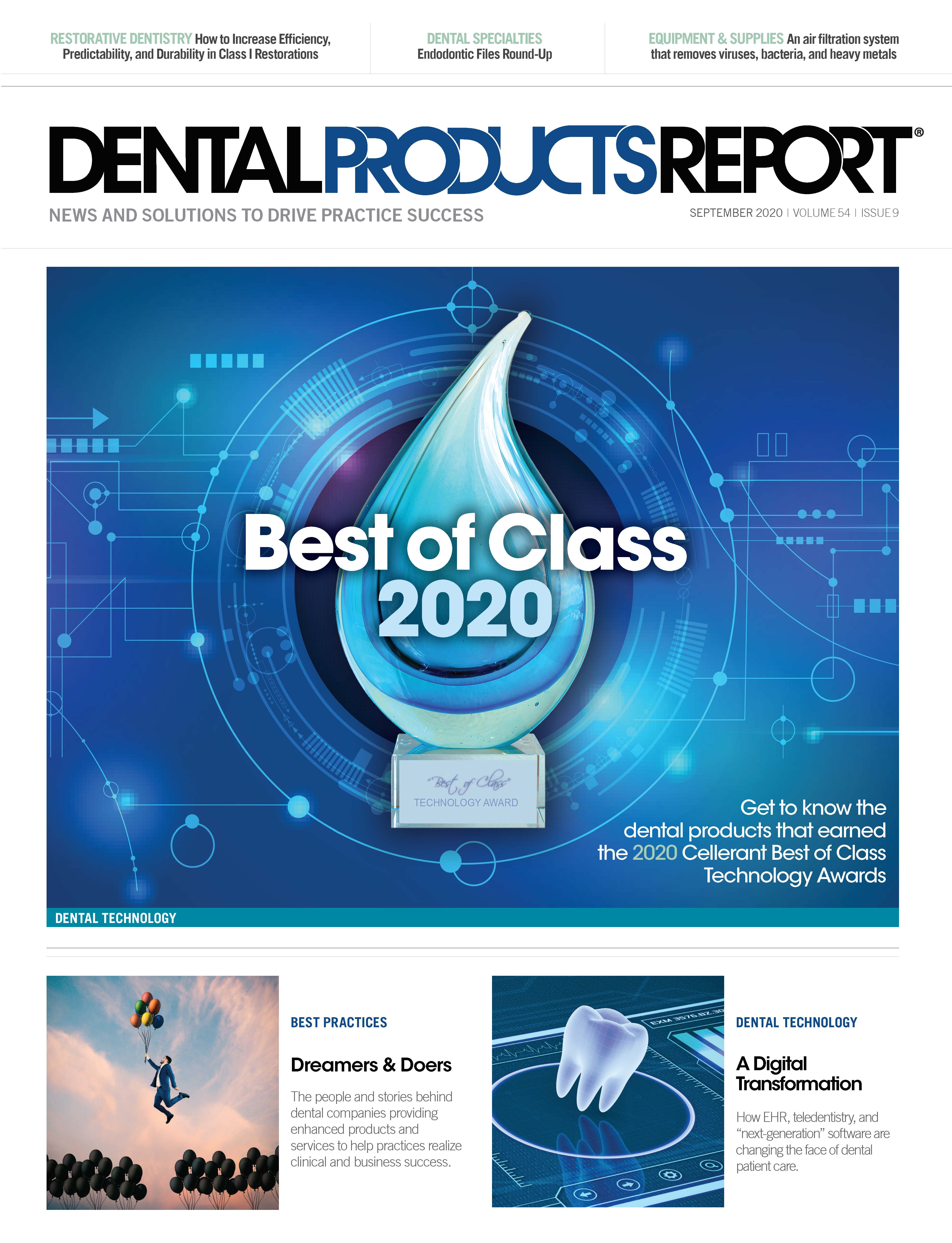Infection control resources to keep your practice up-to-date
There’s a wealth of information out there for infection control and COVID-19, just make sure it’s coming from trusted, reliable sources.
MarekPhotoDesign.com / STOCK.ADOBE.COM

Dentists and hygienists learn about infection control in school, but the learning doesn’t stop there. There is so much to keep up on that staying current can become its own chore. Happily, however, the internet contains ample resources to provide the information that they need. Not only can they keep up on current trends, but there are also refreshers on the basics, should those be necessary.
The internet is a big place, and there is no lack of information at one’s fingertips—for better or worse. With so much information out there, it’s necessary to remember that it’s not always accurate, evidence-based information. Finding reliable, trustworthy information is crucial. Consider the barrage of COVID-19 details.
“Sometimes we’ve forgotten that when this disease first came to our attention, back in January and February, that it was referred to as the ‘Novel Coronavirus’, because it was new and all the virus information was so new,” Jackie Dorst, RDH, BS, observes. Dorst is a “Safe Practices” infection prevention consultant and speaker. “Guidance and prevention is changing as there’s more data collected, more contact investigations, and more research coming out of the dental schools and the research laboratories. We’ve been overwhelmed with the volume of changing information to the point that we question almost everything that we hear, and we don’t know where to put our confidence. So it is important to go to those trustworthy resources and the living documents, the ones that are updated as there is new information.”
Centers for Disease Control
“Naturally, the number one source for infection control is the Centers for Disease Control and Prevention (CDC),” Mary Borg-Bartlett, President SafeLink Consulting, observes. “CDC publishes recommendations that protect patients and workers. CDC recently updated the guidelines on COVID-19 for dentistry, so all dental practices need to review this information.”
Borg-Bartlett recommends the following CDC links for dental practices to use as a resource when setting up their infection control practices:
- Infection Prevention and Control in Dental Settings – This page of CDC Oral Health Department refers to other guidance that can be very helpful for the dentist and the staff member who has been appointed as the Infection Prevention Coordinator and/or OSHA Coordinator. www.cdc.gov/oralhealth/infectioncontrol/index.html
- Frequently Asked Questions – www.cdc.gov/oralhealth/infectioncontrol/faqs/
- Guidelines for Infection Control in Dental Health-Care Settings 2003 – CDC published its Bible for infection control in dental practices in 2003. It goes without saying that this should be a key resource at every dental practice. www.cdc.gov/mmwr/preview/mmwrhtml/rr5217a1.htm
- 2016 Summary of Infection Prevention in Dental Settings – CDC augmented its 2003 document in 2016 with this supplement. www.cdc.gov/oralhealth/infectioncontrol/pdf/safe-care2.pdf
- Cleaning and Disinfecting Environmental Surfaces – www.cdc.gov/oralhealth/infectioncontrol/faqs/cleaning-disinfecting-environmental-surfaces.html
- CDC Statement on Reprocessing Dental Handpieces – www.cdc.gov/oralhealth/infectioncontrol/statement-on-reprocessing-dental-handpieces.htm
- Screening and Evaluating Safer Dental Devices (includes a screening form and an evaluation form) – www.cdc.gov/oralhealth/infectioncontrol/forms.htm
COVID-19
Of course, in this day and age, no compilation of resources would be complete without mention of COVID-19 and how dental practices can deal with it. Dorst recommends the following links:
ADA Return to Work Toolkit – ADA’s Advisory Task Force on Dental Practice Recovery offers a free toolkit to help practices manage returning to providing non-emergent care. Items covered in the toolkit include:
- A welcome back reassurance sample letter
- What to Do if Someone on Your Staff Tests Positive for COVID-19
- Steps to Take if a Patient Reports COVID-19 Exposure After Treatment
- Summary of Reporting Work-Related COVID-19 Illness for OSHA
- Paying Staff Who Are on Leave Due to COVID-19
- Understanding mask types
CDC offers its own resources for dental practices when managing the pandemic. Dorst recommends the following resources:
CDC Appendix 1: Risk Assessment for Healthcare Workers Exposed to Persons with COVID-19 – In the event a team member is exposed to a patient (or other individual) with COVID-19, this worksheet can help assess the level of risk for exposure. www.cdc.gov/coronavirus/2019-ncov/downloads/appendix-1-hcw-risk-assessment-tool.pdf
CDC guidance for asymptomatic HCP who were exposed to individuals with confirmed COVID-19 – To help assist with the assessment of risk and application of work restrictions for asymptomatic team members with potential exposure to patients, visitors, or other confirmed COVID-19 individuals, CDC offers the guidance at www.cdc.gov/coronavirus/2019-ncov/hcp/guidance-risk-assesment-hcp.html
CDC COVID-19 Guidance for Dental Settings – Based on current information, CDC offers interim guidance for dental practices during the COVID-19 pandemic. www.cdc.gov/coronavirus/2019-ncov/hcp/dental-settings.html
- CDC State and Local Health Department Links – Each state has its own guidelines for operation during the pandemic. CDC has compiled links to each state and their individual rules and recommendations for daily operation. www.cdc.gov/publichealthgateway/healthdirectories/healthdepartments.html
- CDC Strategies for Return to Work Guidance – In the event team members do test positive for the SARS-CoV-2 virus, CDC offers the following guidance for returning to work. www.cdc.gov/coronavirus/2019-ncov/hcp/return-to-work.html?fbclid=IwAR3YuwaoLf148SCGlJ7YO56MuYLz5sj1fD4j6-NWTxYmKinMY0IgK_OR9wA
- CDC COVID-19 Interim Infection Control guidance for Healthcare Settings – Based on currently available information about COVID-19 and the current situation in the United States, CDC offers the following guidance for healthcare facilities to restart operations. www.cdc.gov/coronavirus/2019-ncov/hcp/infection-control-recommendations.html
- OSHA COVID-19 Dental Workers and Employers – OSHA offers its own recommendations for dentistry workers and employers during the pandemic. They note that this information is not “a standard or regulation and it creates no new legal obligations,” but rather, the recommendations are advisory in nature and intended to assist employers in providing a safe and healthful workplace. www.osha.gov/SLTC/covid-19/dentistry.html
- OSAP/DQP Best Practices for Infection Control in Dental Clinics during COVID-19 Pandemic – A collaboration between OSAP and the DentaQuest Partnership for Oral Health Advancement, with information from the ADA, ADHA, OSHA, and CDC, this document provides a practical checklist for implementing best practices and a very thorough resource/tools section. cdn.ymaws.com/www.osap.org/resource/resmgr/dentaquest/INC-1353_Best_Practices_for_.pdf
“National Institute for Occupational Safety and Health (NIOSH) is under the CDC and is responsible for providing guidance on the effectiveness of PPE that will protect workers ,” Borg-Bartlett adds. “It is especially helpful now, in regard to protection from COVID-19, since respirators are in use in dental practices where, prior to COVID-19, they were not typically used.” www.cdc.gov/coronavirus/2019-ncov/hcp/ppe-strategy/index.html?CDC_AA_refVal=https%3A%2F%2Fwww.cdc.gov%2Fcoronavirus%2F2019-ncov%2Fhcp%2Fhealthcare-supply-ppe-index.html
Food and Drug Administration (FDA) offers its own resources that can help practices navigate the current PPE climate.
- Masks and respirators – FDA information on N95 respirators, surgical masks, and face masks is helpful in determining the appropriate type of face covering to be used for protection. www.fda.gov/medical-devices/personal-protective-equipment-infection-control/n95-respirators-surgical-masks-and-face-masks
- FDA information on Emergency Use Authorization for PPE – The purpose of this information is to help employers determine alternate PPE that has been approved for use in the U.S. as a replacement to US approved PPE such as the N95 respirator. www.fda.gov/medical-devices/coronavirus-disease-2019-covid-19-emergency-use-authorizations-medical-devices/personal-protective-equipment-euas
OSHA
“OSHA is another source for infection control as far as safety of workers,” Borg-Bartlett says. “The primary document that pertains to preventing exposure to blood and other body fluids is the Bloodborne Pathogens Standard 29 CFR 1910.1030” – www.osha.gov/laws-regs/regulations/standardnumber/1910/1910.1030
“This standard requires development of an Exposure Control Plan that must include Methods of Compliance such as engineering controls, work practice controls, use of PPE, containment of sharps, regulated waste containment, laundry of PPE, off of Hepatitis B vaccine, post exposure evaluation, biohazard labeling, worker training, etc,” Borg-Bartlett says. Other useful OSHA resources include:
- Most Frequently Asked questions on Bloodborne Pathogens Standard – www.osha.gov/laws-regs/standardinterpretations/1993-02-01-0
- Standard interpretation letters – These are letters that business owners have written to OSHA asking specific interpretation of the standards. OSHA responds and then publishes the response. www.osha.gov/laws-regs/standardinterpretations/publicationdate/currentyear OSHA explains these as: “Standard Interpretations are letters or memos written in response to public inquiries or field office inquiries regarding how some aspect of or terminology in an OSHA standard or regulation is to be interpreted and enforced by the Agency. These letters provide guidance to clarify the application of an established OSHA standard, policy, or procedure, but they may not, in themselves, establish or revise OSHA policy or procedure or interpret the OSH Act. They must specifically cite the source policy or procedure document they interpret.”
- Recordkeeping – “This standard establishes which employers must record work-related injuries and illnesses such as fatalities, amputations, loss of an eye, and hospitalization,” Borg-Bartlett says. “There are exemptions that apply to dental offices, however, a state OSHA plan may remove this exemption so a dental practice in a state plan must follow the state plan requirements. There are 28 states with state plans
www.osha.gov/recordkeeping/RKforms.html
- Enforcement policy – OSHA has issued an enforcement policy for recording of work-related COVID-19 illnesses. www.osha.gov/memos/2020-05-19/revised-enforcement-guidance-recording-cases-coronavirus-disease-2019-covid-19
- Standards and directives – List of OSHA standards and directives (instructions to compliance officers) and other related information that may apply to worker exposure to the novel coronavirus, SARS-CoV-2, that causes Coronavirus Disease 2019 (COVID-19). www.osha.gov/SLTC/covid-19/standards.html
The internet is a great place for information, but always make sure to get information from trusted, reliable sources.
“I heard a quote in a vaccine webinar, and one of the doctors said, ‘Unfortunately, we have science by social media now,’ and it’s not always really science,” Dorst says. “It’s not established trustworthy information. Years ago, they used to be referred to as ‘urban myths’. Now, it’s referred to as ‘social media myths’. There’s so much unknown, and the apprehension motivates people to look for the silver bullet. Unfortunately, we don’t have a silver bullet at this time. So, out of desperation and fear of the unknown, people have gravitated to what is on social media. And it’s not always trustworthy.”

Maximizing Value: The Hidden Benefits of Preventing Hospital-Acquired Pneumonia Through Oral Hygiene
September 10th 2024Originally posted on Infection Control Today. Hospital-acquired pneumonia (HAP) is a significant infection prevention concern, leading to high patient mortality, increased health care costs, and ICU usage. Oral hygiene is an effective preventive measure.